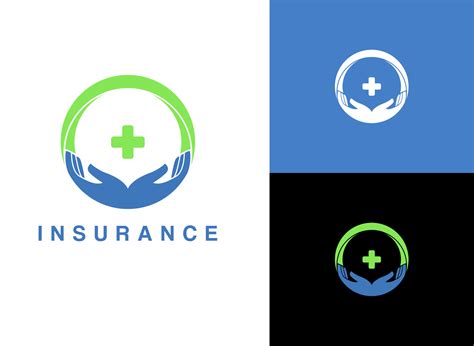Medical Insurance

Medical insurance, also known as health insurance, is a crucial aspect of modern healthcare systems worldwide. It provides financial protection to individuals and families, ensuring they have access to essential medical services without incurring exorbitant costs. With the rising healthcare expenses and the need for comprehensive coverage, understanding medical insurance and its intricacies has become increasingly important for individuals and policymakers alike.
This comprehensive article aims to delve into the world of medical insurance, exploring its various facets, from its historical evolution to its contemporary role in healthcare. We will examine the different types of medical insurance plans, their coverage, and the factors influencing their design and implementation. Additionally, we will discuss the challenges and opportunities presented by medical insurance, offering insights into its future prospects and potential innovations.
The Evolution of Medical Insurance

The concept of medical insurance has evolved significantly over the years, shaping the landscape of healthcare as we know it today. Let’s take a journey through time to understand its historical development.
Early Beginnings
The roots of medical insurance can be traced back to ancient civilizations. In China, for example, mutual aid associations emerged as early as the Zhou Dynasty (1046-256 BCE), where members contributed to a common fund to cover the medical expenses of those in need. Similarly, in medieval Europe, guilds and fraternities offered limited forms of medical coverage to their members, providing financial support during illnesses.
However, it was not until the Industrial Revolution that the need for a more structured and widespread medical insurance system became apparent. The rapid urbanization and industrialization led to a rise in accidents and illnesses among the working class, highlighting the importance of financial protection for medical care.
The Rise of Modern Medical Insurance
The late 19th and early 20th centuries witnessed the emergence of modern medical insurance systems. In 1883, Germany became a pioneer in this field with the introduction of the Sickness Insurance Law, which provided compulsory health insurance for certain workers. This marked a significant shift towards a more organized and inclusive approach to healthcare coverage.
In the United States, the concept of medical insurance gained traction with the development of voluntary health insurance plans. The first major insurer, the Equitable Life Assurance Society, introduced accident insurance policies in the late 1800s, followed by the establishment of the Blue Cross and Blue Shield Association, which offered hospital and medical coverage to millions of Americans.
The mid-20th century saw a significant expansion of medical insurance globally. Many countries adopted universal healthcare systems, ensuring that all citizens had access to essential medical services. The British National Health Service, established in 1948, became a model for providing comprehensive and free healthcare to its citizens.
Types of Medical Insurance Plans

Today, medical insurance plans come in various forms, each designed to cater to different needs and preferences. Let’s explore some of the most common types of medical insurance plans available.
Private Health Insurance
Private health insurance is typically offered by commercial insurance companies and is voluntary for individuals to purchase. These plans offer a wide range of coverage options, allowing individuals to choose the level of coverage that suits their needs and budget. Private health insurance often includes features such as choice of healthcare providers, faster access to specialized treatments, and coverage for non-essential procedures.
Employer-Provided Health Insurance
Many employers offer health insurance plans as part of their employee benefits packages. These plans are often more cost-effective for employees as the employer contributes to the premium. Employer-provided health insurance plans may have specific networks of healthcare providers, and employees usually have limited choices regarding coverage and benefits.
Government-Funded Health Insurance
Government-funded health insurance, also known as public health insurance, is financed and administered by the government. It aims to provide universal healthcare coverage to all citizens, regardless of their income or employment status. Examples include the National Health Service (NHS) in the United Kingdom and Medicare in the United States. These plans typically cover a broad range of essential medical services and may have lower out-of-pocket costs for individuals.
Medicaid and Social Welfare Programs
Medicaid is a joint federal and state program in the United States that provides health coverage to low-income individuals and families. It serves as a safety net for those who cannot afford private insurance. Similar social welfare programs exist in other countries, offering financial assistance and healthcare coverage to vulnerable populations.
High-Deductible Health Plans (HDHPs)
High-deductible health plans are a type of private health insurance plan that has a higher deductible (the amount the insured pays before the insurance coverage kicks in) compared to traditional plans. These plans are often paired with Health Savings Accounts (HSAs), allowing individuals to save pre-tax dollars for medical expenses. HDHPs are cost-effective for those who anticipate lower healthcare needs but may require significant out-of-pocket expenses for unexpected illnesses or injuries.
| Type of Medical Insurance | Key Features |
|---|---|
| Private Health Insurance | Voluntary, wide coverage options, choice of providers, faster access to specialized care |
| Employer-Provided | Cost-effective, limited choices, specific provider networks |
| Government-Funded | Universal coverage, essential medical services, lower out-of-pocket costs |
| Medicaid/Social Welfare | Safety net for low-income individuals, financial assistance, coverage for vulnerable populations |
| High-Deductible Health Plans (HDHPs) | Higher deductible, cost-effective for lower healthcare needs, paired with Health Savings Accounts (HSAs) |

Factors Influencing Medical Insurance Design
The design and implementation of medical insurance plans are influenced by various factors, each playing a crucial role in shaping the coverage and benefits offered.
Healthcare Costs and Inflation
One of the primary drivers of medical insurance design is the rising healthcare costs and inflation. Medical treatments, procedures, and pharmaceuticals have become increasingly expensive over the years, prompting insurance providers to adjust their coverage and premiums accordingly. Insurance companies must strike a balance between providing adequate coverage and keeping premiums affordable for consumers.
Demographics and Risk Assessment
The demographics of the insured population play a significant role in determining the design of medical insurance plans. Age, gender, and pre-existing medical conditions are key factors considered when assessing risk. Insurance companies use actuarial science to calculate premiums and coverage levels based on the predicted healthcare needs of the insured population.
Government Regulations and Policies
Government regulations and policies have a substantial impact on the design and availability of medical insurance plans. In many countries, governments set minimum standards for coverage, ensuring that essential medical services are accessible to all. Additionally, policies such as tax incentives for employers offering health insurance or subsidies for low-income individuals can influence the adoption and affordability of medical insurance.
Market Competition and Innovation
The medical insurance market is highly competitive, with numerous insurance providers offering a wide range of plans. This competition drives innovation, as companies strive to offer unique features and benefits to attract customers. Insurance providers may introduce new coverage options, such as telemedicine services or wellness programs, to meet the evolving needs of consumers.
Challenges and Opportunities in Medical Insurance
The medical insurance industry faces several challenges, but these challenges also present opportunities for growth and improvement.
Addressing Rising Healthcare Costs
One of the most significant challenges in medical insurance is managing the rising healthcare costs. With advancements in medical technology and an aging population, the demand for expensive treatments and procedures is increasing. Insurance providers must find ways to control costs without compromising the quality of care. This may involve negotiating lower prices with healthcare providers, promoting preventive care, and incentivizing the use of cost-effective treatments.
Promoting Health Equity and Access
Ensuring equitable access to healthcare is a crucial goal of medical insurance. However, disparities in coverage and access persist, particularly for marginalized communities and individuals with low incomes. Insurance providers and policymakers must work together to address these inequalities, ensuring that everyone has the opportunity to receive the medical care they need.
Embracing Digital Health Solutions
The integration of digital health solutions presents an opportunity to enhance the efficiency and accessibility of medical insurance. Telemedicine, for example, allows individuals to access medical consultations and services remotely, reducing the need for in-person visits. Insurance providers can leverage technology to streamline processes, improve customer service, and offer innovative coverage options that meet the changing needs of consumers.
Collaboration for Better Outcomes
Collaboration between insurance providers, healthcare professionals, and patients can lead to improved healthcare outcomes. By working together, these stakeholders can identify areas for cost reduction, streamline administrative processes, and focus on preventive care. Integrated care models, where insurance providers and healthcare providers work in partnership, have the potential to deliver better patient experiences and outcomes while controlling costs.
The Future of Medical Insurance

As we look ahead, the future of medical insurance holds both challenges and exciting possibilities. Let’s explore some potential developments and trends that may shape the industry in the years to come.
Personalized Medicine and Genetic Testing
Advancements in personalized medicine and genetic testing are revolutionizing healthcare. Insurance providers may integrate these technologies into their coverage, offering tailored treatment plans based on an individual’s genetic makeup. This approach has the potential to improve patient outcomes and reduce unnecessary costs associated with trial-and-error treatments.
Artificial Intelligence and Data Analytics
Artificial Intelligence (AI) and data analytics are poised to play a significant role in the future of medical insurance. Insurance companies can utilize AI algorithms to analyze vast amounts of healthcare data, identify trends, and predict potential health risks. This information can be used to develop more accurate risk assessment models, improve coverage options, and enhance the overall customer experience.
Value-Based Insurance Models
Value-based insurance models focus on delivering high-quality healthcare while controlling costs. These models incentivize insurance providers and healthcare professionals to work together to improve patient outcomes. By rewarding providers for delivering efficient and effective care, value-based insurance aims to reduce unnecessary procedures and promote preventive measures, ultimately benefiting both patients and insurance companies.
Global Collaboration and Cross-Border Insurance
With an increasingly globalized world, the concept of cross-border insurance is gaining traction. International travelers and expatriates require medical coverage that extends beyond their home countries. Insurance providers can collaborate across borders to offer comprehensive coverage, ensuring that individuals have access to healthcare regardless of their location. This trend may lead to the development of global healthcare networks and innovative insurance products.
What is the primary purpose of medical insurance?
+Medical insurance, or health insurance, provides financial protection to individuals and families, ensuring they can access essential medical services without facing significant financial burden. It helps cover the costs of various healthcare treatments, procedures, and medications, making healthcare more affordable and accessible.
How does medical insurance work?
+Medical insurance works by individuals or employers purchasing a policy from an insurance provider. The policy outlines the scope of coverage, including what medical services and treatments are covered, and the associated costs. When an insured individual requires medical care, they typically pay a deductible (an initial out-of-pocket expense) and the insurance company covers the remaining costs, up to the policy limits.
What factors determine the cost of medical insurance premiums?
+The cost of medical insurance premiums is influenced by various factors, including the insured’s age, gender, pre-existing medical conditions, and the level of coverage desired. Additionally, the overall healthcare costs in a region, inflation rates, and the insurance company’s financial stability impact the premium amounts.
How can individuals choose the right medical insurance plan for their needs?
+When selecting a medical insurance plan, individuals should consider their healthcare needs, budget, and the specific coverage options offered by different plans. It’s important to review the plan’s network of healthcare providers, the types of treatments covered, and any additional benefits or perks included. Consulting with insurance experts or brokers can also help in making an informed decision.



